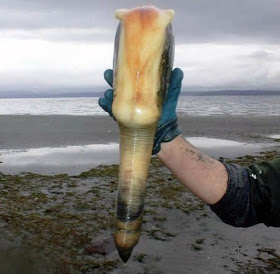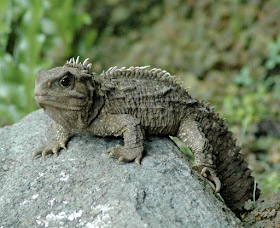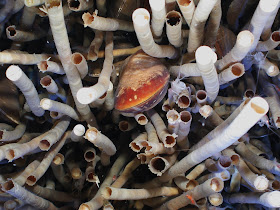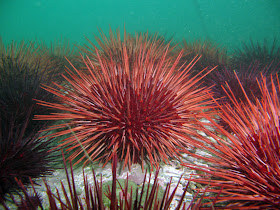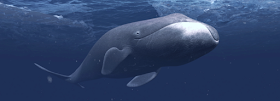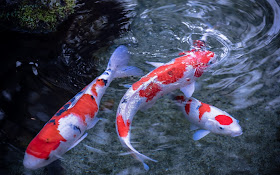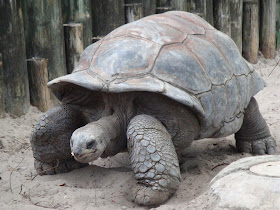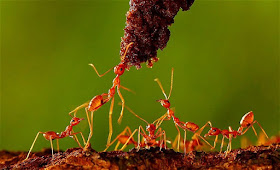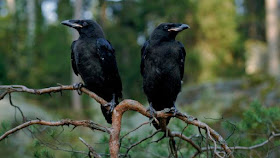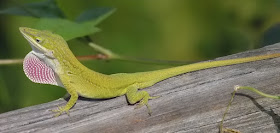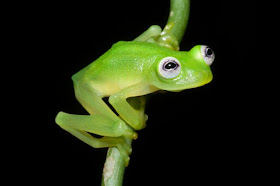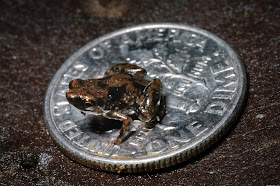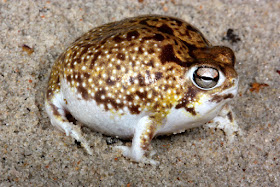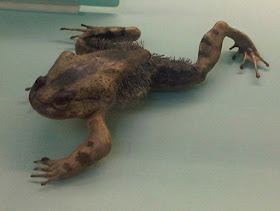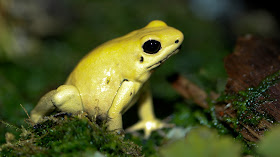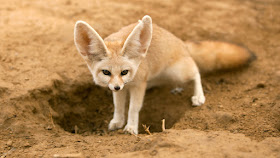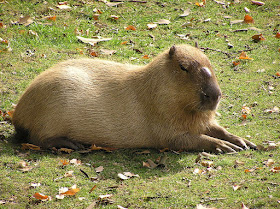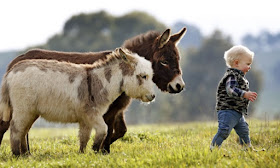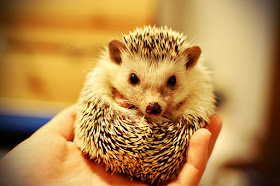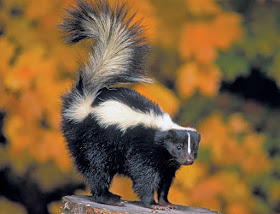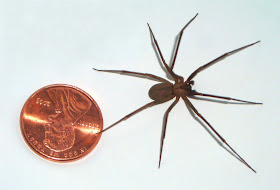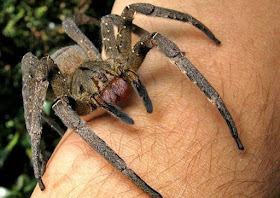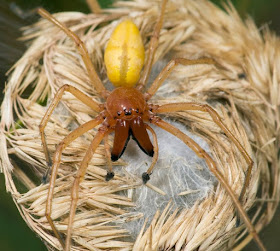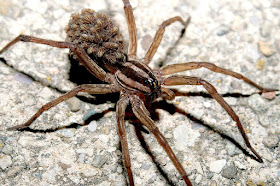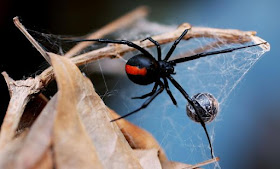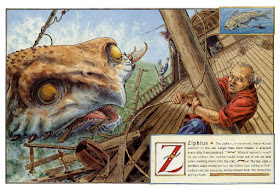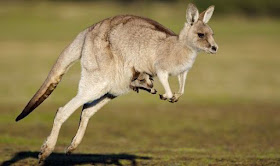Monday, June 29, 2015
8 Animals That Have Very Long Lifespan
Some tortoises were around during the years when Darwin wrote his book on evolution. There are whales that are still swimming with 200 year old spears embedded into their skin. We can even find sponges that have been filter-feeding since the glory days of Rome. We humans are not the only ones who can live for more than a hundred years. Some animals can even live twice as long as we can.
Below are a few species that have very long lifespans. You can even consider some of them immortal.
Geoducks
These huge saltwater clams are commonly found in the Puget Sound, an estuary in the northwestern coast of North America. Geoducks are known to live for a little over 160 years. They’re known for their long “necks”, also called siphons, which usually grows to more than a meter long.
Tuatara
These animals have been around since the time of the dinosaurs. Although there are no individuals that walked the earth with them, Tuataras are said to live between 100 to 200 years. They’re among the longest lived vertebrates on the planet.
Lamellibrachia Tube Worms
Lamellibrachia Tube Worms are colorful, sea creatures that live near hydrocarbon vents deep in the ocean floor. These creatures are known to live up to 170 year, but a lot of researchers say that they can live to more than 250 years.
Red Sea Urchins
Native only to the Pacific Ocean, specifically along North America’s West Coast. They love in rocky, shallow waters and spend most of their time crawling around the sea floor. Some specimen has been living for more than 200 years, so be careful if you ever find one.
Bowhead Whales
Also known as arctic whales, they are known to be the longest living mammals on the planet. Some living bowhead whales were found with ivory spear tips still stuck in their flesh from attempts by whale hunters 200 years ago. A recorded specimen is known to have been around for 211 years.
Koi
These beautiful fishes are known to be ornamental, domesticated specie of carp. They’re commonly seen in decorative ponds and rock pool. Amazingly, these fishes are known to live for more than 200 years. The oldest koi that was recorded was Hanako, which lived for 226 years.
Tortoises
People often mistake tortoises for turtles. The main difference between them is that turtles live in water while tortoises live on land. The oldest recorded living specimen was a Galápagos tortoise names Harriet, who lived to a very ripe age of 175 years. She was the last living representative of Darwin's voyage on the HMS Beagle.
Ocean quahog
This is a clam specie that you can commonly find in seafood markets. Researchers say that the dark bands or rings on their shell represent a year of their life. Some specimen was found to have more than 400 bands around their shells.
Saturday, June 27, 2015
7 of the Smarts Animals On Earth
Humans may have the power of consciousness, but we are not the lonely smart beings on the planet. Some animals are actually quite smart, even when you least expect them to be. Scientist noticed that animals are also capable of solving problems, giving them a lot of edge in the wild.
Here are some of the smartest animals.
Bees
According to researchers, bees have a sort of kaleidoscopic memory d the flowers they see in the environment, which helps them figure out which flowers are the best to feed on. They also self-medicate inside their hives. They’re also great engineers, creating complex hives with honeycomb structures that we even use as an inspiration for a number of buildings.
Octopus
They might have squishy tentacles, but don’t let these fool you. Octopuses are very intelligent animals. They spread cultural information, communicate through colors, flashing, and patters, and even mimic others. Octopuses also have an advanced navigational abilities and spatial learning capacity. Their tentacles act like fingers that can manipulate objects.
Elephants
The largest mammal on land also has highly evolved social skills, much like us humans. Elephants are able to shoe loving and compassionate behavior to their family members. They also have amazing memory skills and can remember enemies and friends for 50 years or more. They even have their own form of communication.
Ants
These tiny creatures are absolutely amazing team players. Along with their social skills, the also show a great amount of individual intelligence. They’re great navigators and can remember lengthy routes. Studies on ants show that they know how to care and become altruistic amongst members of their colony.
Dolphins
Dolphins have long interest researchers. They have a certain communication system, identify themselves in the mirror, and are creative in finding new ways to capture fish. Like humans, they are also very social and work together as a team. Wild dolphins are also known to help herd fish into fishermen nets, expecting their share afterwards.
Crows
Crows are one of the smartest birds on the planet. They are able to use analogies and counting to solve problems. They can take on higher-order, relational-matching task spontaneously. Crows also use tools to finish tasks. Studies have also shown that crows are able to comprehend the Archimedes principle, which successfully abled them to access food by manipulating water levels.
Anole
Lizards don’t really get a lot of recognition for cognitive abilities, but the Anole has impressed researchers with their intelligence. They demonstrate that they know how to count, and they have advance problem solving and learning skills. They also have extraordinary memories.
Monday, June 22, 2015
6 of The Strangest Frogs On The Planet
Frogs. You either like them or you hate them. As one of the most diverse animal species in the planet, you can find frogs in all corners of the world. With over 4,700 species, and more being discovered, these amphibians have evolved with some strange features.
Here are 6 of the strangest frogs on the planet.
Diane's bare-hearted glass frog
This new species of frog got a lot of attention because of its resemblance to the character Kermit the frog. with its bright green skin and big eyes, it looks very close to the puppet. found in Costa Rica’s slopes, it also has a unique call that sets it apart from the rest. This tiny frog grows to about an inch long and has a translucent underbelly that lets you see its organs. It was discovered by Costa Rican Amphibian Research Center Brian Kubicki and named it after his mother.
Paedophryne amauensis
What makes this specific frog interesting is that it’s smaller than a dime. Because of this, it was recorded as the smallest vertebrate on earth. Growing to an average of 0.3 inches, it has also mastered the art of camouflage. Found in the forests of Papua New Guinea, researchers had to find a way to capture these tiny frogs since they became near to invisible on the forest floor. They’d scoop up leaf litters into plastic bags and listen for the ones who made sound.
Desert Rain Frog
Although frogs commonly croak, the desert rain frog makes a squeaking sound. found in South Africa and Namibia along a 6.2 mile wide coastal habitat. This specie is mainly seen in the tropical dry, coastal, and subtropical areas that have a lot of sand. It digs a hole and buries itself 4 to 8 inches underground to stay away from the sun and keep itself moist and cool. It then comes out at night to hunt larvae and insects.
Ornate Horned Frog
This frog is known by its nickname, the Pacman frog, because of its huge mouth. it can pretty much swallow prey that’s as big as it is, ranging from small rodents, insects, and even other frogs. it’s insatiable appetite fits it fairly big size, usually growing to about 6 inches in length. its colorful, red, green, and yellow skin makes it stand out even more. A native to the grasslands of Argentina, Brazil, and Uruguay, its conservation status is tagged by the IUCN as near threatened. It’s also gaining popularity as an exotic pet.
Hairy Frog
You’d think that frogs are always wet and slimy with smooth skins, but the Hairy frog has features that’s just plain odd, and even scary. Also known as the Wolverine or horror frog, it has the ability to break a part of its toe bone and use it as a defense when threatened. male specimen also have a hair-like growth found on their sides which it uses to absorb more oxygen.
Golden poison dart frog
One of the most poisonous animals in the planet, these colorful, but deadly, frogs were used by native tribes to poison their darts, hence their name. the Golden poison dart frog grows to about 2 inches long and has enough toxins to kill about 10 to 20 people. found in the forest of south America, they’re living proof that brightly colored animals should be approached with caution.
Saturday, June 20, 2015
5 of The Most Exotic Pets You Can Have
Having an exotic pet has become all the rage nowadays. a dog or cat has become too common, so people are getting into taking care of pets that are in the more exotic side. Below are a few exotic animals that you can have as pets. Before getting them, you should check your local laws to make sure it’s legal to take care of one in your area.
Fennec Fox
Although foxes don’t usually make good pets, Fennec foxes are an exception. These small species of fox are native to the Sahara desert in North Africa. One feature that makes these foxes stand out is their giant ears. These help them stay cool in the desert heat. Fennec foxes are smart and are easy to housetrain. A litter box is enough for them. They’re very active so you’ll need some space for them to exercise.
Capybara
They may be related to hamsters and guinea pigs, but they’re definitely not that small. These giant rodents grow to about 4 feet long and can weigh in at a hundred pounds. in certain areas, capybaras are illegal to have as pets, so check your local legislations. They’re also high maintenance pets. They need a lot of room and a small water pond where they can swim in.
Miniature Donkey
These fuzzy and cute donkeys look like baby donkeys for the rest of their lives. They’re great with kids and are very friendly. Getting these donkeys as a pet means you’ll have to get a couple of them. These animals are very social animals and they have to live with other miniature donkeys to survive. Although they’re mall animals, they need a lot of room to roam around.
Hedgehog
Hedgehogs are very friendly and affectionate to their owners. Although they have spines, they actually don’t hurt when you tough them. They don’t require a lot of maintenance, but do need a lot of attention. These nocturnal cuties live off worms that you can get at any petshop these days.
Skunk
People might think you’re crazy for keeping a pet skunk, but they can actually make good pets. They’re low maintenance and require little care. Before you can get one as a pet, their scent glands are removed. This means that you absolutely have to be sure that you can take care of one since they can’t be taken back to the wild without their scent glands. Make sure you also get it from a reliable source that’s certified to breed and sell skunks.
Monday, June 15, 2015
5 of the Most Aggressive Spiders in the Planet
Spiders are one of the most commonly feared insects. Who wouldn’t be afraid of them? They creep up on you with their hairy legs and they bite. Although spiders often run off and hide, some of them are a bit more aggressive. Here are some of the most aggressive spiders on the planet and what happens when you get bitten by them.
Brown Recluse Spider
A native in North America, the brown recluse spider has venom that’s capable of destroying blood vessel walls around the area where the bite is found. This can even develop into a skin ulcer when not treated immediately. The venom targets a cell membrane component called phospholipid. Fortunately, it takes a long time for the bite to become severe and victims have time to cure it.
Brazilian Wandering Spiders
Also called banana spiders, they’re native to South America and are often found on banana leaves. When provoked, these spiders get into a defensive posture where they raise their two front legs straight into the air to make themselves look bigger. Their venom is very poisonous and targets the nervous system. A bite can lead to irregular heartbeat, salivation, and extended, painful erections in men. a good thing from this though is that researchers are looking into the use of the venom as a possible erectile dysfunction treatment.
Yellow Sac Spider
These spiders are members of the Clubionids family and build tube-shaped webs under stones, in grass, and in leaves. Found in North America and northern South America, their venom is a cytotoxin. This destroys or impairs the function of cells and can develop a necrotizing lesion. Extreme swelling and redness around the area of the bite is commonly seen. They’re also not passive creatures. Female specimen often becomes very aggressive when defending their eggs.
Wolf Spider
Coming from the Lycosidae family, these spiders are large and are found all over the world. They’re named after their wolf-like habit of chasing and jumping on prey. They also move fast, which scares people even more. Although they often stay in grassy areas, under logs, leaf litter, and stones, they do stay in human dwellings from time to time. These spiders are one of the most aggressive spider species. Although their venom is not that poisonous, they do deliver a very painful bite.
Black Widow
One of the most common spiders that send people to poison control centers, the black widow is notorious for its painful bit and strong venom. They’re seen across the north and south Americas and often live in burrows, around plants, and woodpiles that they use as support for their webs. Bites have a sort of pinprick feel and results to severe nausea, cramping, muscle pain, and a mild paralysis of the diaphragm, causing difficulty in breathing.
Sunday, June 14, 2015
5 Cryptids that are Actually Real
Cryptids are animals based on myths and legends, but some of them have actually been proven real. Through the past century, different explorations and discoveries have taken these animals out of fairytale books and into real life. Here are 5 cryptids that were proven and listed as real animal species.
Devil Bird
Also called as the Ulama, this frightening creature is found in Sri Lankan folklore. They’re identified as large, horned birds that have blood-curdling screams which locals perceive as a warning that death is coming. In 2001, a new owl species was identified as Devil Bird, which is a spot-bellied eagle owl. These large owls fit the tufted “horns” and high pitch screeches.
Ziphius
According to Medieval folklore, these animals had a fish body and an owl’s head, characterized by large eyes. It attacked ships with its wedge-shaped beak and sword-like fin. The Cuvier’s Beaked Whale fits the description of the Ziphius perfectly, from the large eyes to the wedge-shaped beak. These whales are in the genus Ziphius, named after the mythical creature.
Kangaroo
Kangaroos were once considered cryptids since early explorers who went to Australia had difficulties classifying them. They wrote about a creature that had a head like a deer, stood upright, and hopped around like a frog. They even described some of the creatures as having two heads, one on its shoulder and another one on its stomach. Finally, kangaroo specimens were taken to England in 1770 for examinations and exhibits. They later classified it as a marsupial.
Platypus
Another native in Australia, this strange creature left a lot of zoologist baffled when it was first presented to them. Accounts described the Platypus as a mixture of a beaver and a duck which laid eggs and was venomous. Scholars assumed that the preserved specimen of the creature was a mere elaborately sown-together joke, but it was finally recognized as a unique animal. These semi-aquatic mammals are the only mammals that lay eggs and are seen in eastern
Sea Serpent
A very common mythological creature found across different cultures, this animal is said to be a massive, snake-like creature that lives in the sea. Able to take down boats, sea serpents were the stuff of sailor’s nightmares. Today, the Oarfish is classified as sea serpent. This extremely rare creature grows to about 17 meters (56 ft) and spends most of its time in deep water. They do wash up on shore every now and then due to storms.

